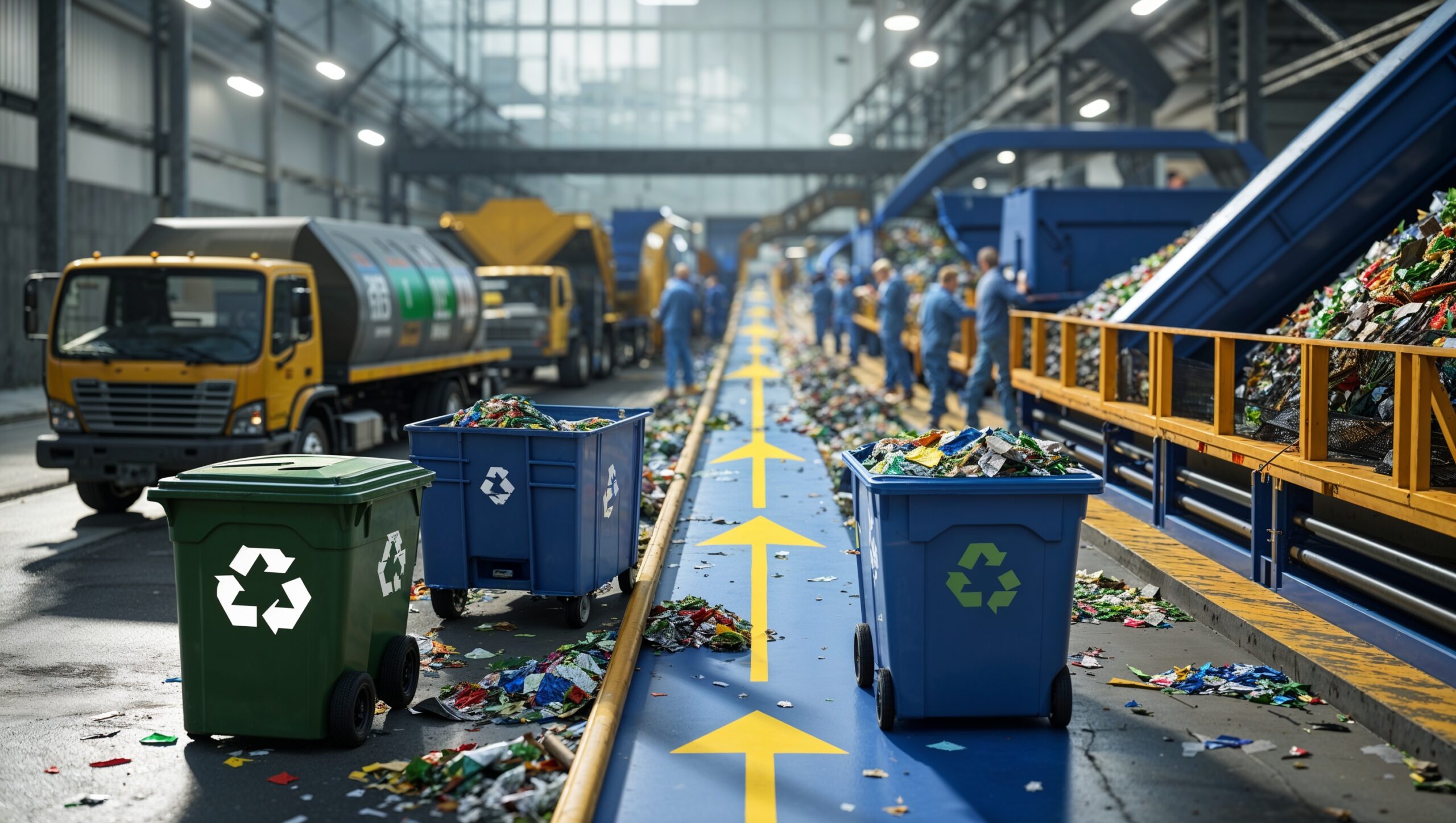You’ve sorted your waste, rinsed your containers, and rolled your bin to the curb. But what actually happens next? Where does your recycling go — and does it really get recycled?
In this article, we’ll take you step by step through the recycling process after collection, showing how materials are sorted, processed, sold, and transformed into new products. It’s a journey worth understanding — and it starts right at your front door.
Step 1: Collection
Your recyclables are picked up by a municipal truck or private hauler on your scheduled day.
✅ The truck may:
- Collect only recyclables
- Pick up combined with trash (in some systems)
- Take materials directly to a Materials Recovery Facility (MRF) or a transfer station
🛑 Tip: Place items loose in the bin — not in plastic bags, which can jam equipment and lead to contamination.
Step 2: Transportation to the Sorting Facility
Once collected, recyclables are taken to an MRF (Materials Recovery Facility). This is where the real work begins.
These facilities receive tons of mixed materials every day and use a combination of machines and people to separate everything by type.
Step 3: Sorting by Material Type
Inside the MRF, recyclables are sorted using high-tech systems:
🔄 Common sorting tools:
- Conveyor belts to transport materials
- Magnets to pull out steel and tin
- Eddy currents to repel aluminum
- Air jets to separate light plastics and paper
- Optical sorters to detect and sort by plastic type
- Manual sorting lines for quality control
Each type of material — paper, cardboard, plastic, glass, metal — is separated into clean, uniform bales.
Step 4: Baling and Storage
Once sorted, materials are compressed into bales to make transportation efficient. Each bale contains only one material, like:
- Aluminum cans
- PET plastic (#1)
- Cardboard
- Mixed paper
These bales are stored temporarily until sold to manufacturers who will turn them into new products.
Step 5: Selling to Recyclers and Manufacturers
MRFs sell the bales to domestic or international buyers who specialize in processing and reusing recycled content.
✅ Buyers may include:
- Paper mills
- Plastic reprocessors
- Glass refiners
- Aluminum manufacturers
The market value of each material fluctuates depending on demand, cleanliness, and global trade policies.
Step 6: Processing into Raw Materials
The sold recyclables go to factories where they are:
- Melted (plastic, glass, metal)
- Pulped (paper, cardboard)
- Crushed or refined into raw form
These raw materials are then used to make new products, like:
- Recycled paper goods
- Plastic bottles and containers
- Aluminum cans
- Textile fibers and clothing
- Construction materials
Some items return to store shelves in as little as 30–60 days.
Step 7: Back to Consumers — Closing the Loop
You buy a product made from recycled content — and the cycle starts again.
✅ Every successful cycle depends on:
- Proper sorting by consumers
- Clean, non-contaminated materials
- Demand for recycled goods
Recycling only works if we support it on both ends — by disposing correctly and by buying recycled products.
Challenges Along the Way
While the system works in many places, it faces real issues:
🛑 Problems include:
- Contamination from food, plastic bags, or non-recyclables
- Limited markets for some plastics
- Wish-cycling (putting non-recyclables in the bin, hoping they’ll be recycled)
- Insufficient local processing facilities
But the more we understand the system, the better we can support and improve it.
What You Can Do to Help the System Succeed
✅ Recycle only accepted items
✅ Rinse containers to avoid contamination
✅ Never bag recyclables
✅ Support companies that use recycled content
✅ Stay informed about local guidelines
✅ Educate others
Recycling is a team effort — and it works best when every link in the chain is strong.
Recycling Is a Journey — and You’re Part of It
From your kitchen bin to a factory floor, recycling is more than a routine — it’s a global process. Your role at the start is just as important as what happens at the end.
So the next time you toss a bottle in the blue bin, remember:
You’re not throwing it away. You’re giving it a second life.
